Things We Treat
Arthritis
What is Arthritis?
Arthritis is a common condition that involves inflammation and stiffness in the joints. There are many types of arthritis, but the two most common types are osteoarthritis and rheumatoid arthritis.
Osteoarthritis
Osteoarthritis is a disease which affects the whole joint as the cartilage on the ends of bones change’s structure and thins over time. This can cause pain and swelling in and around the affected joint and limit your functional capacity and mobility. Osteoarthritis is usually able to be diagnosed through a combination of physical examination and an X-ray.
Some key features of osteoarthritis are:
- Pain or swelling in the joints
- Pain that progressively worsens over time
- Decreased movement in joints
- Joint stiffness which is often worse first thing in the morning or following extended periods of inactivity.
Evidence has shown the best treatment for osteoarthritis is to exercise and strengthen the muscles around the affected joint, along with providing education regarding the condition and weight-control as needed. Alternative treatments we provide are the prescription of a home exercise program, as well as hands-on treatment techniques – which can have short term benefits.
If suffering from knee or hip osteoarthritis, at Watsonia Physiotherapy we run the GLAD program, a 6-week program designed to improve functional ability for people with knee and hip osteoarthritis.


Rheumatoid Arthritis
Rheumatoid arthritis is an autoimmune condition, causing the body to attack the synovium which is the lining that surrounds joints. This can lead to inflammation in the joints which will cause pain, swelling, and stiffness. Rheumatoid arthritis is diagnosed through a combination of imaging and blood tests which will check for certain inflammatory markers. If rheumatoid arthritis is suspected referral to a rheumatologist is required.
Some key features of rheumatoid arthritis are:
- It often affects joints symmetrically
- You may experience other symptoms such as fever, fatigue, or general weakness
- Severity of symptoms may fluctuate. There may be periods where symptoms are quite intense, but this is usually followed by a period where symptoms aren’t as severe.
Physiotherapy can play an important role in the management of rheumatoid arthritis. The aim of treatment will be to maintain joint range of motion and provide an exercise program to strengthen muscles surrounding the impacted joints.
Psoriatic arthritis
Psoriatic arthritis is an autoimmune condition which can affect people who have psoriasis, which is a chronic skin condition. This can result in joint inflammation which can lead to pain swelling, and decreased mobility. There is no specific blood test to diagnose psoriatic arthritis, but blood tests may be required to rule out other conditions. Like rheumatoid arthritis, your GP may feel referral to a rheumatologist is required to help manage the condition.
Some key features of psoriatic arthritis are:
- Often associated with psoriasis. The skin lesions can be present with joint inflammation or can be present either before or after the onset of symptoms
- Can cause pain in multiple joints or the spine
- Swelling in fingers or toes, resulting in a ‘sausage fingers’ appearance
Physiotherapy can play a key role in the management of psoriatic arthritis. The aim of treatment will be to maintain joint range of motion and increase strength of the muscles surrounding the affected joints. Education will also be provided regarding strategies and how you can modify your daily activities to manage your pain more effectively.


Ankylosing Spondylitis
Ankylosing Spondylitis is a chronic inflammatory condition of the spine and sacroiliac joints. This leads to pain and stiffness in the spine, eventually resulting in fusion of the bones making up the spine. Ankylosing Spondylitis typically affects younger adults and is more common in males. If Ankylosing Spondylitis is suspected your GP may refer you to a rheumatologist who will play a key role in managing the condition.
Some of the key features of ankylosing spondylitis are:
- Pain and inflammation through the lower back
- Pain and inflammation through the sacroiliac joints. These are the joints where the spine meets the pelvis
- Inflammation where tendons attach to the bone. An example of this would be the heel where the Achilles tendon attaches
- In some cases, there can be pain in other joints such as the hips or knees
- Can affect other organs such as the eyes, heart, and gastrointestinal tract
Physiotherapy can play a key role in the management of ankylosing spondylitis. The aim of treatment will be to maintain spinal range of motion and increase strength of the muscles surrounding the affected joints.
